#White River
Explore tagged Tumblr posts
Text

#outdoors#trout#trout fishing#flyfishing#fly fishing women#arkansas#arkansas fly fishing#women fly fishing#tight lines#fly fishing#feetinthewater#browntrout#white river
49 notes
·
View notes
Text
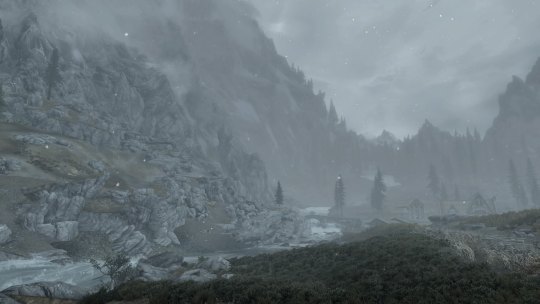
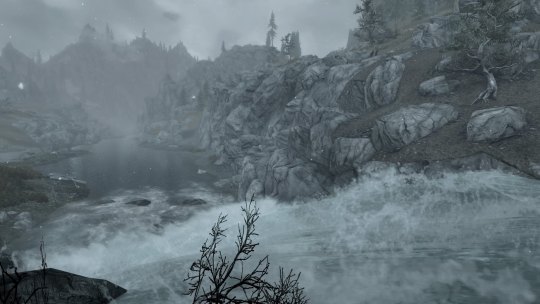

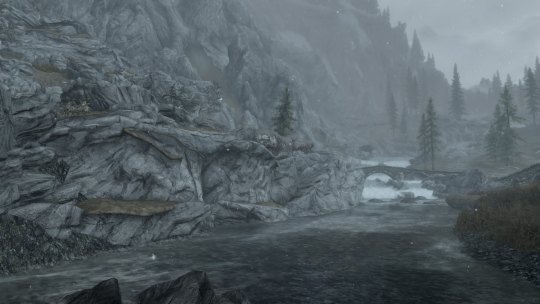
𝕊𝕟𝕠𝕨 𝔽𝕝𝕦𝕣𝕣𝕚𝕖𝕤
A Skyrim journey, 48/?
#Senu's Skyrim Collection#TES#The Elder Scrolls V: Skyrim#Skyrim#The Elder Scrolls#PS4#unedited#screenshots#Whiterun Hold#Tundra Homestead#White River#snow#river#waterfall#bridge#trees
115 notes
·
View notes
Text
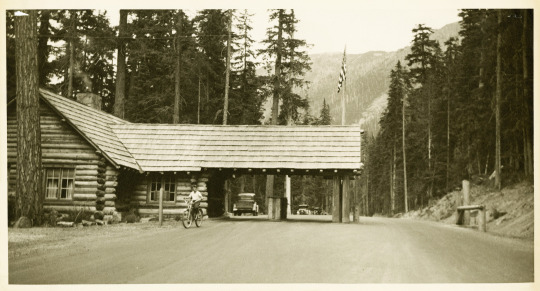
Mount Rainier National Park Archives Photo of the White River Ranger Station, circa 1931, with the porte-cochère extending out over the road.
White River Entrance is in the northeast corner of Mount Rainier National Park and was built between 1929-1931 in anticipation of the opening of Sunrise Road in 1931. It replaced an earlier entrance station that had been built in 1915. The new White River Entrance was modeled after the Nisqually Entrance, the first entrance in the park located in the southwest corner. The White River Ranger Station, which served as a combined office and checking station, was constructed of whole logs with a cedar shingle roof in the NPS Rustic style of architecture. A large porte-cochère, a roof extending out over the roadway, was added to the design to help serve visitors during poor weather. A few years later, a very similar porte-cochère was added to the Nisqually Entrance checking station.
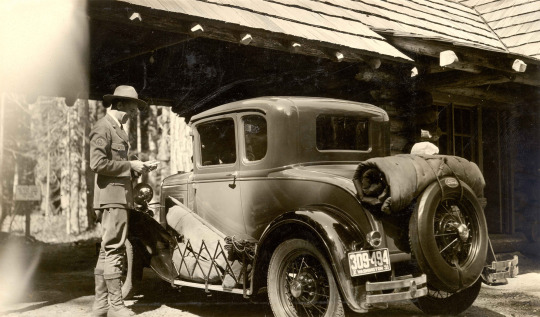
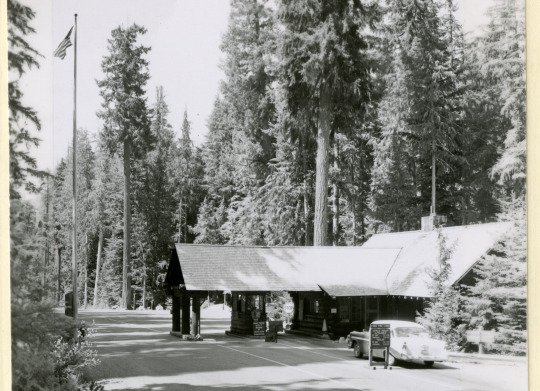
Mount Rainier National Park Archives Photos: a ranger handing out the first visitor permit, 7/15/1931, (left), and the ranger station in 1960 with the center kiosk (right).
The White River porte-cochère was altered three times over the years, at one point extending over two lanes with a fee kiosk in the middle, before ultimately being downsized to its current smaller configuration that no longer allows vehicles. The current entrance kiosks were built in 2001 and the historic ranger station now serves as the White River Wilderness Information Center. White River Ranger Station is a contributing building to the Mount Rainier National Historic Landmark District.

NPS/E. Brouwer Photo of the White River Ranger Station in 2014.
Did you visit White River Ranger Station when it was still the checking station or have you stopped to get wilderness information there during the summer?
~kl
#Historic Mount Rainier#mount rainier national park#White River#White River Entrance#White River Ranger Station#history#historic structure#NPS Rustic#rustic architecture
88 notes
·
View notes
Text

#skyrim#skyrim scenery#falkreath#lake ilinalta#white river#may the ground you walk queue as you pass
5 notes
·
View notes
Text




National Winnie the Pooh Day
Grab a pot of “hunny”, enjoy a game of Poohsticks and revisit these beloved childhood stories about a bear and all his friends
One of the cuddliest holidays around has to be National Winnie the Pooh Day, celebrated on the birthday of author A. A. Milne. It’s one special anniversary fans just can’t bear to miss! Every year, the occasion is marked with events such as teddy bears’ picnics, featuring plenty of honey on the menu.
History Of Winnie The Pooh Day
Winnie the Pooh first appeared on the printed page in 1926, together with friends Piglet, Tigger, and Eeyore. All of them were based on toys owned by the author’s son, who also featured in the famous stories as Christopher Robin. The character later starred in a series of much-loved Disney films.
The name Winnie, for instance, came from Milne’s teddy bear Winnie. The “Pooh” part was from the nickname of a swan he’d met on holiday. The rest of the names, besides those mentioned above, were purely creations of his mind and allegedly did not refer to any objects in the real world.
The story and adventures of Winnie the Pooh are set in the ancient Ashdown Forest of East Sussex. The area features beautiful open heathland, wooded areas, and high ridges. Locals consider it an area of outstanding natural beauty.
Many stories in Winnie the Pooh have clear associations with locations in the forest. The illustrations that accompanied the original books often depicted scenes from this part of the world. Pooh, Tigger, and the crew are regularly seen marching through beautiful gorse, heather, bracken, and silver birch, all popular in the Ashdown area.
The landscapes were an essential part of what helped to make Winnie the Pooh such a compelling pop phenomenon. Like J.R.R Tolkien, Milne had found something unique and persuasive in the English countryside. There was deep magic about it that lent itself to pure escapism. The idea of friendly animal characters adventuring in such an area whisked audiences off to another world that had nothing to do with the pressures of the modern economy.
The first-ever Pooh stories appeared in a Christmas special edition of the Evening Standard newspaper in December 1924. The first book Winnie-the-Pooh emerged around a year later. It told the very first stories of Pooh and his compatriots as they humorously toured through idyllic country scenes, collecting honey and arguing pleasantly.
The Winnie the Pooh brand remained in the Milne family until 1930 until television and merchandising expert, Stephen Slesinger, bought out the rights. Milne received a $1,000 payment upfront plus 66 percent of the income generated by Slesinger’s efforts. Over the next thirty years, Winnie-the-Pooh transformed into a $50 million-a-year franchise – a testament to its tremendous popularity.
Pooh ceased being solely a storybook character. He soon grew into a film star, musician, and toy brand. No longer was the concept confined to the pages of a book. Winnie-the-Pooh had a very real presence in the world.
Throughout it all, though, Slesinger and the Milne family remained faithful to the original character of Winnie-the-Pooh. At first blush, everyone’s favorite yellow bear seems a little slow and dim-witted. But as the stories develop, you soon see endearing aspects of his character and profound emotional intelligence.
Pooh is keenly aware of his intellectual limitations, but this is an aspect that makes him so lovable. There’s no pretense about the bear. He just wants to live his life and find practical, hands-on solutions to problems. Examples of his down-to-Earth nature abound from his rescuing of Eeyore from a river to Poohsticks’ invention.
Pooh is also extremely fond of food and not afraid to indulge a little in life’s pleasures. He loves what he calls “hunny” and will go to great lengths to acquire it.
Most of the time, Pooh hangs out with his friends. He is a social creature, always interested in the lives of others. He makes a habit of spending time with the other animals of the forest and ensures that their needs are met. He is a kind of steward and a leader, without people realizing it.
When Disney bought the rights to the franchise in 1966, they were keen to keep Pooh’s lovable persona intact. Bosses at the studio knew that it was a winning formula and something people instinctively loved. Pooh hit the big time, thanks to animated productions from the cartoon maker.
The first production in 1966 was a theatrical “featurette” called Winnie the Pooh and the Honey Tree. Later, Disney followed up these productions with Winnie the Pooh and the Blustery Day and Winnie the Pooh and Tigger Too in 1974.
Seeing the demand for a feature-length film, the studio combined all three into The Many Adventures of Winnie the Pooh.
Things kicked off for the franchise after 1980. Producers gave the go-ahead for a series of new movies and television series that exposed entire generations of children to the concept. The first of these was Welcome to Pooh Corner, which ran from 1983 to 1986. After that came The New Adventures of Winnie the Pooh and My Friends Tigger & Pooh.
Ultimate, Milne intended Winnie the Pooh as a work that would comfort, not challenge. And that remains very much the essence of the franchise to this day.
How to Celebrate Winnie The Pooh Day
Thanks to the sheer number of films, books, and TV adaptations, there are all kinds of ways you can enjoy National Winnie the Pooh Day. In fact, there’s so much content to consume, there’s no way you’ll get it all done in twenty-four hours. Oh well, there’s always next year!
If you’re the sort of person who loves the history of Winnie the Pooh, why not spend the day reading Milne’s original works, starting with the Christmas edition of the 1924 Evening Standard? Then move on to reading the compilation stories to get a sense of how the author originally envisioned the character.
After that, it might be fun to move on to later adaptations of Pooh to see how he evolved over time. Often, you’ll find striking consistency, and sometimes you’ll find small cultural context changes here and there. Overall, though, it is incredible how similar the modern incarnation is to his historical counterpart.
Indulging in a Winnie the Pooh movie marathon can also be a lot of fun. You could watch all the films from the 1970s until the present, back to back.
Winnie the Pooh was also a massive lover of food, especially honey. Nothing is stopping you from recreating his favorite recipes from the books and movies.
Finally, one extra-special way to mark the day is to visit Pooh Corner in Hartfield, East Sussex, where the books were written. You can pick up a map to follow in the characters’ footsteps, and even play a game of Poohsticks on the original bridge.
Celebrating National Winnie the Pooh Day, therefore, is way easier than you might think. Dressing up as a bear, eating lots of honey, and watching your favorite Pooh movies are all great options.
Source
#National Winnie the Pooh Day#WinnieThePoohDay#18 January#White River#Ontario#Winnie-the-Pooh#Winnie's hometown#Canada#travel#outdoors#landmark#original photography#summer 2012#sculpture#it ain't Disney's Winnie#A.A. Milne#born#18 January 1882#NationalWinniethePoohDay#roadside attraction#tourist attraction#children's book#author#writer#vacation#birthday#anniversary#culture#cityscape
4 notes
·
View notes
Text

Fossil Novembirb: Day 8
Bathornis veredus and Daphoenus fight over a dead Mesohippus
33 notes
·
View notes
Text
Little Golden Gate Bridge
Beaver, Arkansas








9 notes
·
View notes
Text




#winnie the pooh#white river ontario#white river#visted here in september and forgot to post the pics
4 notes
·
View notes
Text
white river, calico rock, ar



#mine#rural america#rural photography#white river#arkansas#south#midwest#rural#river#river photography
39 notes
·
View notes
Text

2 notes
·
View notes
Text

The White in Arkansas ❤️
#fly fishing#outdoors#trout fishing#arkansas#trout#arkansas fly fishing#tight lines#outdoorlife#the great outdoors#white river
24 notes
·
View notes
Text


Pictoscribe at Flickr
2 Shots of White River in Chelan Co
4 notes
·
View notes
Text

NPS/S. Shane Photo of Steamboat Prow, 1991.
Landscape Language
Prow (noun) – the forward part of a ship’s hull
Like the prow of a ship cutting through ocean waves, the landscape formation known as Steamboat Prow splits apart the two largest glaciers on Mount Rainier. The Emmons and Winthrop Glaciers are connected from the summit down to Steamboat Prow, then divide to flow into separate valleys. In the photo above, Steamboat Prow is the large triangular shaped formation on the eastern slopes of Mount Rainier. Emmons Glacier flows down on the left and is the source of the White River. The Winthrop Glacier descends on the right and is the source of the West Fork of the White River. The West Fork rejoins the White River outside of the park, which eventually flows into the Puyallup River and into Puget Sound.
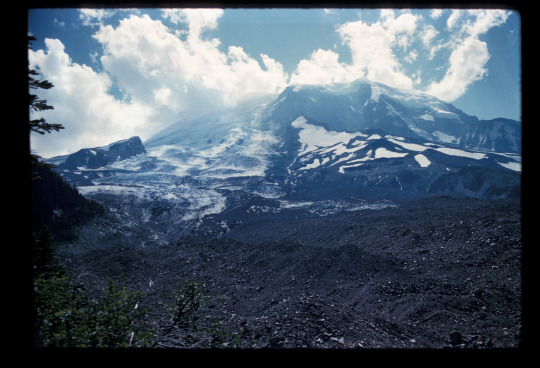
NPS Photo of the Winthrop Glacier with Steamboat Prow on the left, 1961. ~kl
#landscape language#mount rainier national park#Steamboat Prow#Emmons Glacier#Winthrop Glacier#glaciers#White River#West Fork of the Whiter River#geology
43 notes
·
View notes
Text

8 notes
·
View notes
Text
























Teddy Day
Teddy Day is an annual event held every February 10. We are ecstatic to be celebrating love and companionship via one fluffy friend that is always there no matter what — Teddies! Teddy bears, as the name implies, are stuffed toys often made to resemble a bear, and bears are known for their hugs, although fatal. But ours is one of love which is what this day is all about.
History of Teddy Day
Stuffed toys have been children’s best toys since ancient times. They are soft, squishy, and a good companion for all. In the Roman Empire, the children of the rich had wooden carved toys in the shape of animals and humans they played with, and it was such that only the children of the rich could afford and get them. So the children of the low class and peasants developed ragdolls made from clothes and straws, and over the years, they evolved into stuffed toys as we know them in the world today.
Teddy bears are soft fluffy toys in the shape of bears that evoke feelings of love and warmth when we hold and hug them. They come in different sizes; small, medium, large, and even plus size. Like all other stuffed toys, Teddy bears have evolved from being toys for children to being toys for everyone, including men and women. So during the cold, lonely nights and when we’re feeling emotionally down or happy, teddy bears serve as a great cuddle companion.
Teddy bears got their name in 1902 after President Theodore Roosevelt in a series of events that happened when he went on a hunting trip. During hunting, they happened upon a bear, and President Roosevelt refused to shoot it. The story soon spread all over, and the first stuffed bears were developed by toymakers Morris Michtom in the U.S, and Richard Steiff in Germany, and they were named ‘Teddy bears,’ after President Roosevelt’s pet name.
Teddy Day is a time to show love to our special persons and significant others by gifting them teddy bears. It shows how special they are to us and the warm and lovable feelings they bring to us, just like teddies.
Teddy Day timeline
1880 First Stuffed Toy
The first modern stuffed toy in the shape of an elephant is sold as a pincushion by the German Steiff Company.
1902 The Inception of Teddy Bears
After the incident with President Roosevelt where he refused to shoot a bear on a hunting trip, stuffed teddy bears are developed and become popular.
1906 Bear Book
A book on bears is written by Seymour Eaton, a children’s books series called “The Roosevelt Bears.”
1984 Teddy Museum
The first Teddy Bear Museum is set up in England.
Teddy Day FAQs
Why are Teddies so comforting?
Their fluffiness and softness possess a calming ability that eases the mind and emotions. Research has found that cuddling them releases oxytocin which calms the body.
At what age should a child stop sleeping with Teddies?
There is no specific age limit to sleeping with or having teddies. More than just being toys, they are also tools of convenience.
Can a baby sleep with a teddy?
It had been advised not to put stuffed toys beside children below 12 months because of the risks of death by strangulation or suffocation.
Teddy Day Activities
Gift a Teddy
Buy a Teddy
Become a Teddy
How can you observe Teddy Day without a Teddy? Gift your special someone a teddy bear and tell them how much you love them.
Other than giving teddies to your special someone, this is also a good time to get one for yourself. Visit your favorite stores and get yourself a fluffy teddy companion on this day.
Your partner might have lots of teddies already, putting you at a fix, but not to worry. Instead, rent a teddy bear costume to entertain your partner and make their day.
5 Important Facts About Teddies
Winnie the Pooh
Spacefarer bear
Teddy Magazine
Teddy Guinness record
World biggest Teddy
The most famous teddy in the world, Winnie the Pooh, created by author A. A Milne is named after a female bear named Winnipeg in the London zoo he frequented with his son.
The first teddy bear to journey into space is named Magellan T. Bear, which joined the NASA shuttle mission in 1995.
There is a magazine dedicated to teddy bears that has more than 40,000 subscribers called “Teddy Bears and Friends.”
The largest teddy bear collection in the world is 20,367, owned by Istvánné Arnóczki in Hungary on April 27, 2019.
The biggest Teddy bear in the world is located in Estado de Mexico, at 63 feet and eight inches.
Why We Love Teddy Day
Teddies are lovable toys
Helps on cold lonely nights
Teddies can be therapeutic
The fluffiness and cute appearance of teddy bears make us easily fall in love with them. Many manufacturers make them have wide beautiful eyes and innocent-like looks, which warms the heart and sends warm feelings always.
Some nights can be very terrible without a cuddle companion nearby. Teddies are one cuddle companions we can always count on to help us through the cold, lonely nights.
Research has found that cuddling a Teddy bear can be calming. Police, medical and fire officials reiterate the fact that giving a child a teddy during a crisis has calming effects on them.
Source
#Sculpture of the North by Sonny MacDonald & Eli Nasogaluak & John Sabourin & Armand Vaillancourt#The Way of the Grizzly by Douglas Van Howd#Yellowknife#Northwest Territories#West Yellowstone#Max Gam Ol by Clint Adams#Terrace#Bear Affection by Mike Tyler#Whistler#Spirit Bear Mother#“How the Animals Got Their Names” by Smoker Marchand#Omak#Trees of Mystery#California#USA#Boston#Massachusetts#original photography#travel#vacation#Tufts Medical Center#South Lake Tahoe#Quebec City#White River#Winnie-the-Pooh#Canada#cityscape#tourist attraction#10 February#Idaho Falls
3 notes
·
View notes
Photo
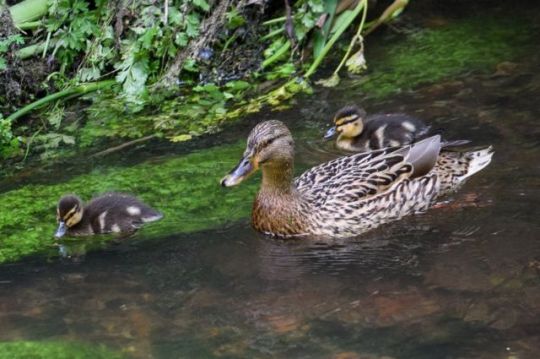
Dick Westcott took this photograph at White River in Pentewan, Cornwall
17 notes
·
View notes